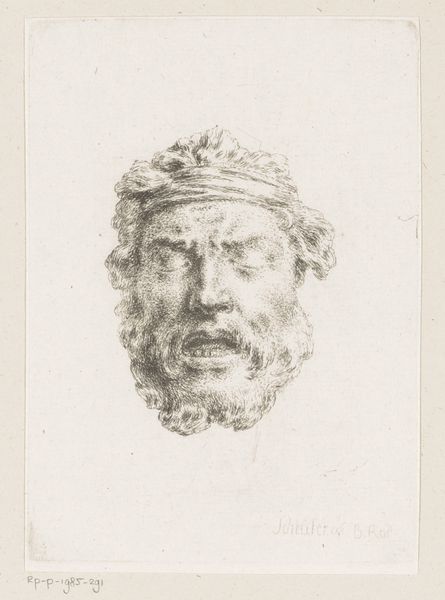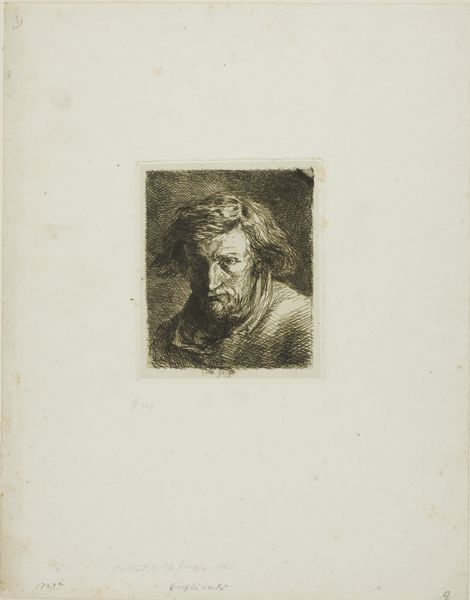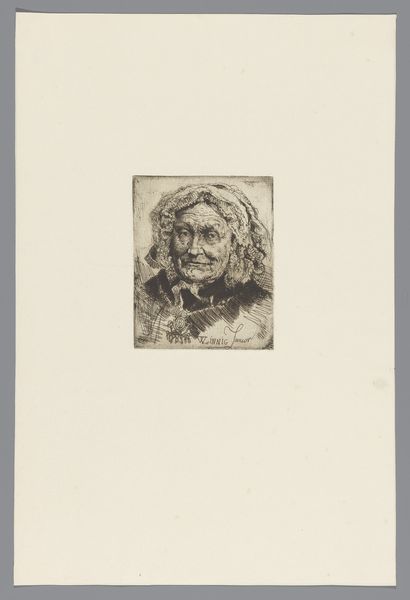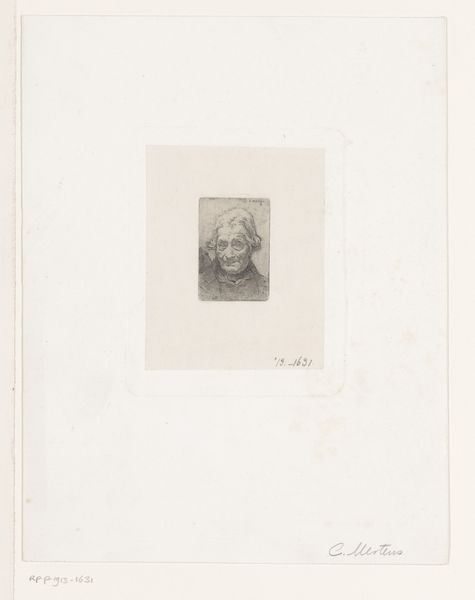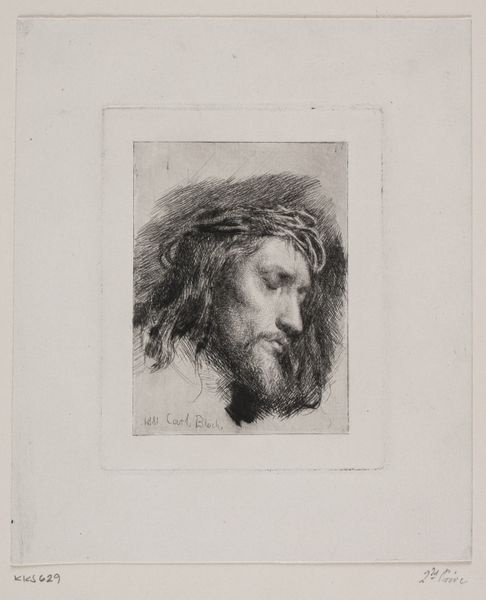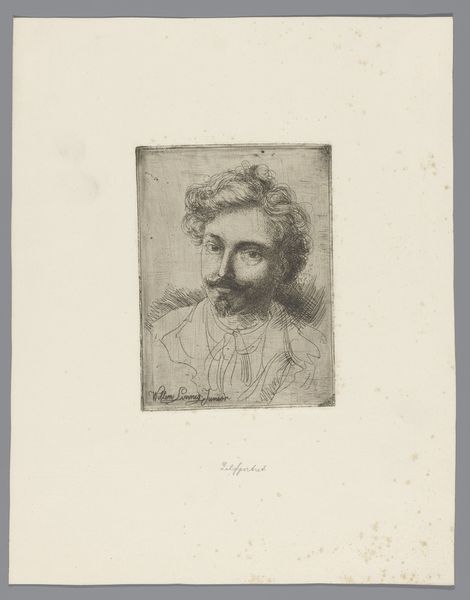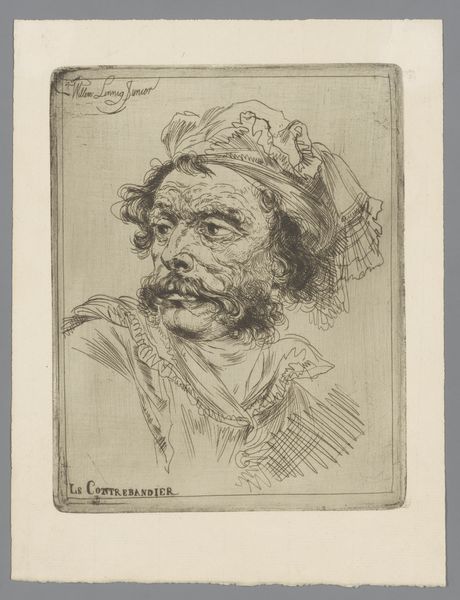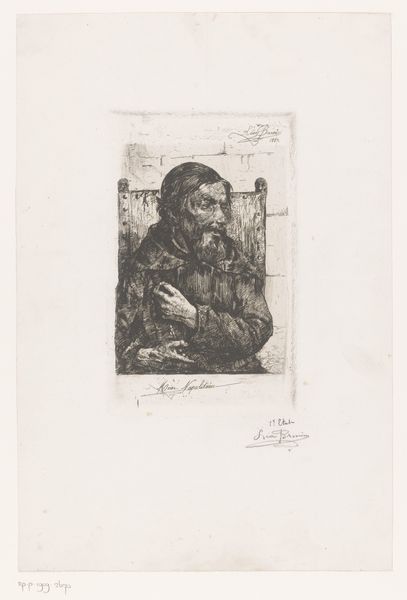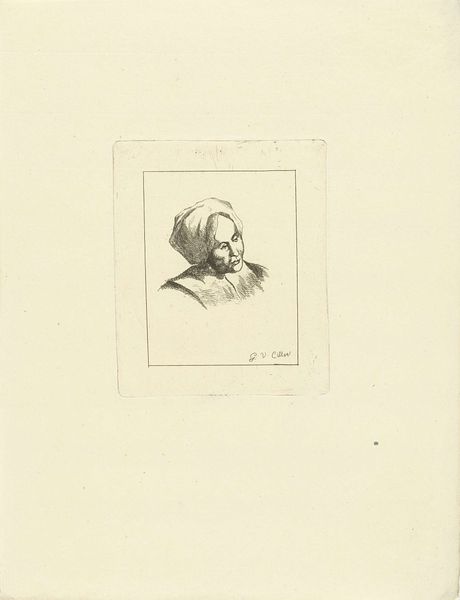
drawing, paper, ink
#
portrait
#
drawing
#
paper
#
ink
#
realism
Dimensions: height 145 mm, width 99 mm
Copyright: Rijks Museum: Open Domain
Curator: This is Willem Linnig's "Portrait of an Unknown Man with a Headscarf," dating from the late 19th century. It's an ink drawing on paper, currently held at the Rijksmuseum. Editor: There’s something quite arresting about the gaze. He looks almost wary. How should we interpret this portrayal within the context of 19th-century portraiture? Curator: The directness of the gaze is key. Think about the rise of realism and its connection to broader social shifts. Portraiture, historically a tool of the elite, began to explore a wider range of subjects. The 'unknown' man here moves portraiture beyond traditional status displays. How do you see the headscarf playing into this? Editor: I see the headscarf giving a sense of, maybe, exoticism or... otherness? It feels like the artist might be signaling something about the man’s cultural background, perhaps unconsciously reinforcing stereotypes. Curator: Precisely. The “unknown” is as significant as the headscarf itself. Without a name or context, the figure becomes subject to projections. This kind of image circulated in a time when European society was rapidly classifying people and constructing racialized identities. So, who benefits from this ambiguity and categorization? Editor: That makes me reconsider my initial assumptions. I had just taken the image at face value without thinking about who had the power to frame his image. It’s less about him and more about how he's being perceived and presented. Curator: Indeed. Linnig gives us a fascinating glimpse, not just of a face, but into the dynamics of seeing and categorizing in the 19th century. Editor: I now understand better the sociopolitical forces in realism, especially concerning who gets to be seen and how. Curator: And how these choices shape the way we interpret the work over a century later.
Comments
No comments
Be the first to comment and join the conversation on the ultimate creative platform.
